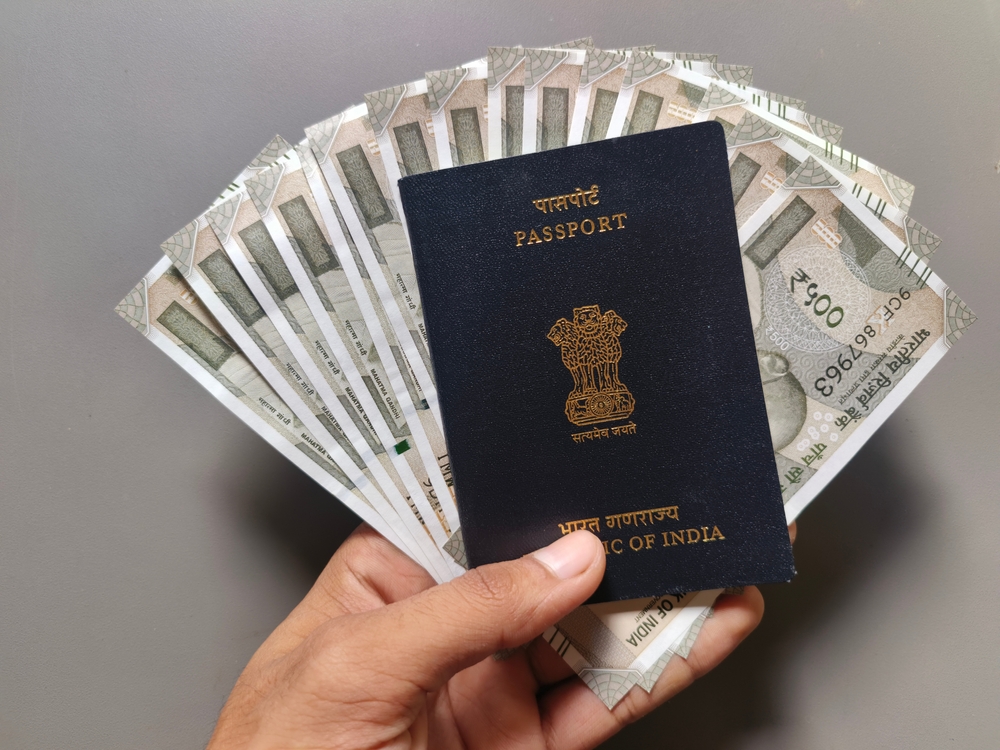 Last updated: September 18th, 2024 3:01 PM
Last updated: September 18th, 2024 3:01 PM
Income Tax Return for NRI
Picture this: You've just relocated from India and are now working at a renowned multinational corporation abroad, enjoying a lucrative salary and a host of amazing perks. Life is great, but there's one crucial aspect of your finances that needs attention—your taxes. You might think that since you've moved abroad and are an NRI (Non-Resident Indian), you’re completely exempt from Indian taxes. However, that's not entirely accurate. Under the Indian tax regime, NRIs are required to pay tax on income that is accrued or received in India, even if they are earning income outside the country. This can complicate tax filing, making it a daunting task. But don’t worry—this guide will walk you through the steps needed to file Income Tax Return for NRI. Simplify your NRI tax filing with expert support from IndiaFilings! [shortcode_102]Is it compulsory to file Income Tax Return for NRI?
Yes, it is compulsory to file an income tax return for NRI if your income in India exceeds the basic exemption limit or if you have tax liabilities. Unlike resident individuals, the tax slab rates for Non-Resident Indians (NRIs) are not classified by age. All NRIs, regardless of age, are taxed uniformly.Tax Slab Rates for NRIs:
Old Tax Regime| Income Tax Slab | Income Tax Rate |
| Up to 2,50,000 | Nil |
| 2,50,001 – 5,00,000 | 5% above 2,50,000 |
| 5,00,001 – 10,00,000 | INR 12,500 + 20% of income above 5,00,000 |
| Above 10,00,000 | INR 1,12,500 + 30% of income above 10,00,000 |
| Income Tax Slab | Income Tax Rate |
| Up to 2,50,000 | Nil |
| 2,50,001 – 5,00,000 | 5% above 2,50,000 |
| 5,00,001 – 7,50,000 | INR 12,500 + 10% of income above 5,00,000 |
| 7,50,001 – 10,00,000 | INR 37,500 + 15% of income above 7,50,000 |
| 10,00,001 – 12,50,000 | INR 75,000 + 20% of income above 10,00,000 |
| 12,50,001 – 15,00,000 | INR 1,25,000 + 25% of income above 12,50,000 |
| Above 15,00,000 | INR 1,87,500 + 30% of income above 15,00,000 |
- Up to ₹3 lakh: Nil
- ₹3 lakh to ₹6 lakh: 5%
- ₹6 lakh to ₹9 lakh: 10%
- ₹9 lakh to ₹12 lakh: 15%
- ₹12 lakh to ₹15 lakh: 20%
- Above ₹15 lakh: 30%
- 10% surcharge on income exceeding ₹50 lakh but up to ₹ one crore.
- 15% surcharge on income exceeding ₹1 crore but up to ₹ two crore.
- 25% surcharge on income exceeding ₹2 crore but up to ₹ five crore.
- 37% surcharge on income exceeding ₹5 crore.
Income Tax Return Form for NRI
When filing income tax returns as a Non-Resident Indian (NRI), selecting the correct Income Tax Return (ITR) form for NRI is crucial for ensuring compliance and accuracy. Here’s a detailed look at the income tax return form for NRI: Until Assessment Year (AY) 2017-18, NRIs were eligible to file ITR 1 for their income earned or accrued in India. ITR 1, also known as Sahaj, was a simpler form primarily designed for residents earning income from salary, one house property, and other sources like interest income. From the Financial Years (FY) 2018-19 and 2019-20 onwards, amendments were made to the eligibility criteria for ITR 1. The form is now restricted to Resident Individuals only and is not available for Non-Residents or non-ordinary residents. This change means NRIs must choose alternative forms for filing their returns.ITR 2 for NRIs
ITR 2 is the appropriate income tax return form for NRI who have income other than income from business or profession. This includes:- Income from House Property: If you earn rent from properties located in India.
- Interest Income: Interest earned from savings accounts, fixed deposits, or other investments in India.
- Capital Gains: Profits from the sale of assets like shares, bonds, or property located in India.
ITR 3 for NRIs
If you, as an NRI, are involved in business or professional activities in India, you need to file ITR 3. This income tax return form for NRI is designed for individuals who:- Carry on a Business or Profession: Income derived from business operations or professional services in India.
- Income from House Property: Similar to ITR 2, but combined with business income.
- Capital Gains and Other Income: If applicable.
Due Date for Filing Income Tax Return for NRI
The deadline to file your ITR for the Financial Year (FY) 2023-24 and Assessment Year (AY) 2024-25 is July 31, 2024.Documents Required for Filing Indian Income Tax Return Form for NRI
When filing your Income Tax Return (ITR) in India as an NRI, it’s crucial to have all necessary documents at hand to ensure accurate and efficient processing. Here’s a list of essential documents you’ll need:- PAN Card
- Passport
- Form 16(if employed in India)
- Bank Account Details
- Property Documents(if owning in India)
- Rent Receipts(if renting out property)
- Investment Statements
- Foreign Income Details
How to File Income Tax Return for NRI
Filing taxes as an NRI might seem like a complex process, but breaking it down into manageable steps can make it more straightforward. Here’s a detailed 8-step guide to help you file Income Tax Return for NRI:Step 1: Determine Your Residential Status in India
The first step in filing taxes as an NRI is determining your residential status according to Indian tax laws. Your residential status affects your tax liabilities and eligibility for various tax benefits. According to the Income Tax Act of 1961, an individual’s residential status is determined based on the number of days they stay in India during the financial year and the preceding years. Generally, if you spend more than 182 days in India during a financial year, or if you have been in India for 60 days in the financial year and 365 days in the preceding four years, you are considered a resident for tax purposes. As an NRI, you would typically be classified as a Non-Resident if you do not meet these criteria.Step 2: Reconcile Income & Taxes with Form 26AS
Form 26AS is a consolidated tax statement that provides details of tax deducted at source (TDS), advance tax payments, and other tax-related information. It is crucial for reconciling your income and taxes. To ensure that you have accounted for all the taxes correctly, obtain Form 26AS from the Income Tax Department's website or through your tax advisor. Compare the details in this form with your records to ensure that all taxes have been correctly deducted and credited. Any discrepancies should be rectified before proceeding with your tax return filing.Step 3: Ascertain Taxable Income and Determine Your Tax Liability
Next, you need to determine your taxable income, which includes any income accrued or received in India. This can include:- Income from Salary: If you are receiving a salary from an Indian employer or have income from employment while working remotely for an Indian company.
- Income from Property: Rental income from properties located in India.
- Interest Income: Interest earned on savings accounts, fixed deposits, or other investments in India.
- Capital Gains: Gains from the sale of assets like stocks, real estate, or mutual funds in India.
Step 4: Claim Double Taxation Treaty (DTT) Relief
India has signed Double Taxation Avoidance Agreements (DTTAs) with several countries to prevent income from being taxed twice. If you are paying taxes in your country of residence on income that is also taxable in India, you may be eligible to claim relief under these treaties. To claim DTT relief, you need to provide proof of taxes paid abroad and the details of the tax treaty provisions. This will help you avoid paying tax on the same income in both countries. Once you have accurately determined and calculated all the aforementioned steps, you can proceed to the next crucial phase: How to File Income Tax Return for NRI.Step 5: Register on the Income Tax e-Filing Portal
Before you can file your ITR online, you must create an account on the Income Tax Department's e-filing portal.- Visit the Portal: Go to the official website of the Income Tax Department.
- Register: Click on the "Register Yourself" option.
- Choose User Type: Select "Individual" as the user type.
- Enter PAN Details: Provide your Permanent Account Number (PAN) as your Taxpayer Identification Number (TIN) for NRIs.
- Complete Registration: Fill in other required details such as name, date of birth, and contact information.
- Set Password: Create a secure password for your account.
- Verification: After submitting, you'll receive an activation link or OTP (One-Time Password) on your registered email or mobile number. Use this to activate your account.
Step 6: Log In to Your e-Filing Account
- Access the Portal: Navigate to the e-Filing login page.
- Enter Credentials: Input your PAN, password, and captcha code.
- Two-Factor Authentication: Complete any additional verification steps if prompted.
Step 7: Which form to fill for income tax return for NRI?
Depending on your income sources, which form to fill for income tax return for NRI can be ITR-2 or ITR-3. Choosing the correct Income Tax Return form for NRI is crucial for accurate filing.- Navigate to ITR Forms: Once logged in, go to the "e-File" menu and select "Income Tax Return."
- Choose Assessment Year: Select the relevant assessment year (e.g., AY 2024-25 for FY 2023-24).
- Select ITR Form: Based on your income sources, choose the appropriate form:
- ITR-2: For NRIs with income from house property, capital gains, or other sources.
- ITR-3: For NRIs involved in business or professional activities in India.
Step 8: Download the ITR Form or Use the Online Form
You have two options to fill out your ITR:- Fill Online: Use the online ITR forms available on the portal. They guide you through each section, making it easier to input information accurately.
- Download XML Utility:
- Download Form: Download the applicable XML utility for your chosen ITR form from the "Download" section.
- Fill Offline: Open the XML file using Microsoft Excel or any compatible spreadsheet software.
- Enter Details: Fill in the required fields
Step 9: Disclosure of Bank Account Details
As part of the tax filing process, you need to disclose details of all bank accounts held in India. This includes both savings and current accounts, along with any foreign bank accounts if applicable. The Income Tax Department requires this information to ensure transparency and compliance with tax regulations. Ensure that all bank account details are accurate and updated in your tax return. Any discrepancies or omissions can lead to complications or delays in processing your return.Step 10: Provide Assets and Liabilities Details in ITR
You are required to disclose details of your assets and liabilities in the ITR. This includes:- Assets: Properties, investments, and other valuable assets held in India and abroad.
- Liabilities: Loans or debts incurred.
Step 11: Upload Supporting Documents
While income tax returns for NRI can be filed without uploading documents initially, certain scenarios may require you to upload specific documents:Step 12: Preview and Validate Your Return
- Review Entries: Carefully review all the information entered in your ITR form to ensure accuracy.
- Validate: If using the XML utility, ensure that all mandatory fields are correctly filled and that there are no errors flagged during validation.
- Calculate Tax: The portal or XML utility will automatically calculate your tax liability based on the provided information.
Step 13: Submit Your ITR
- Upload XML (If Applicable): If you used the XML utility, upload the validated XML file on the e-Filing portal.
- Submit Online Form: If you filled out the online form interactively, simply click the "Submit" button.
Step 14: Verify Your ITR
After filling out the ITR form, the final step is to verify your return. This can be done electronically through the Income Tax Department’s e-filing portal or by sending a physical copy of the signed ITR-V form to the Centralized Processing Centre (CPC) in Bangalore. Electronic verification is often quicker and more convenient. Ensure that you complete this step within 120 days of filing your return to avoid any penalties or processing delays.Step 15: Confirmation of Successful Filing
Once your ITR is successfully filed and verified, you will receive an acknowledgement from the Income Tax Department. You can check the status of your return by logging into your e-filing account and navigating to the "View Returns/Forms" section. How to fill income tax returns for NRI involves several steps, as outlined above. Ensuring accurate and thorough information entry, selecting the correct ITR form, and verifying your return are crucial for compliance and avoiding any legal issues.Conclusion
Filing income tax returns as an NRI might seem daunting, but following these steps can simplify the process. By determining your residential status, reconciling income and taxes, and understanding the various aspects of your tax liability, you can ensure compliance with Indian tax laws while making the most of available tax reliefs. If you need assistance with your tax filing, consider reaching out to IndiaFilings tax advisors. With our help, you can navigate the complexities of tax regulations and ensure a smooth and hassle-free income tax return filing for NRI.Frequently Asked Questions About NRI Income Tax Returns
Is Aadhaar Card Mandatory for NRI Income Tax Return?
Is Income Tax Return Filing Mandatory for NRI?
How to File a Nil Income Tax Return for NRI
What is Taxpayer Identification Number for NRI in Income Tax Return?
What is the Income Tax for NRI Returning to India?
Popular Post

In the digital age, the convenience of accessing important documents online has become a necessity...

The Atalji Janasnehi Kendra Project that has been launched by the Government of Karnataka...

The Indian Divorce Act governs divorce among the Christian couples in India. Divorce...

When an individual has more than a single PAN card, it may lead to that person being heavily penalised, or worse,...

Employees Provident Fund (PF) is social security and savings scheme for employee in India. Employers engaged...


